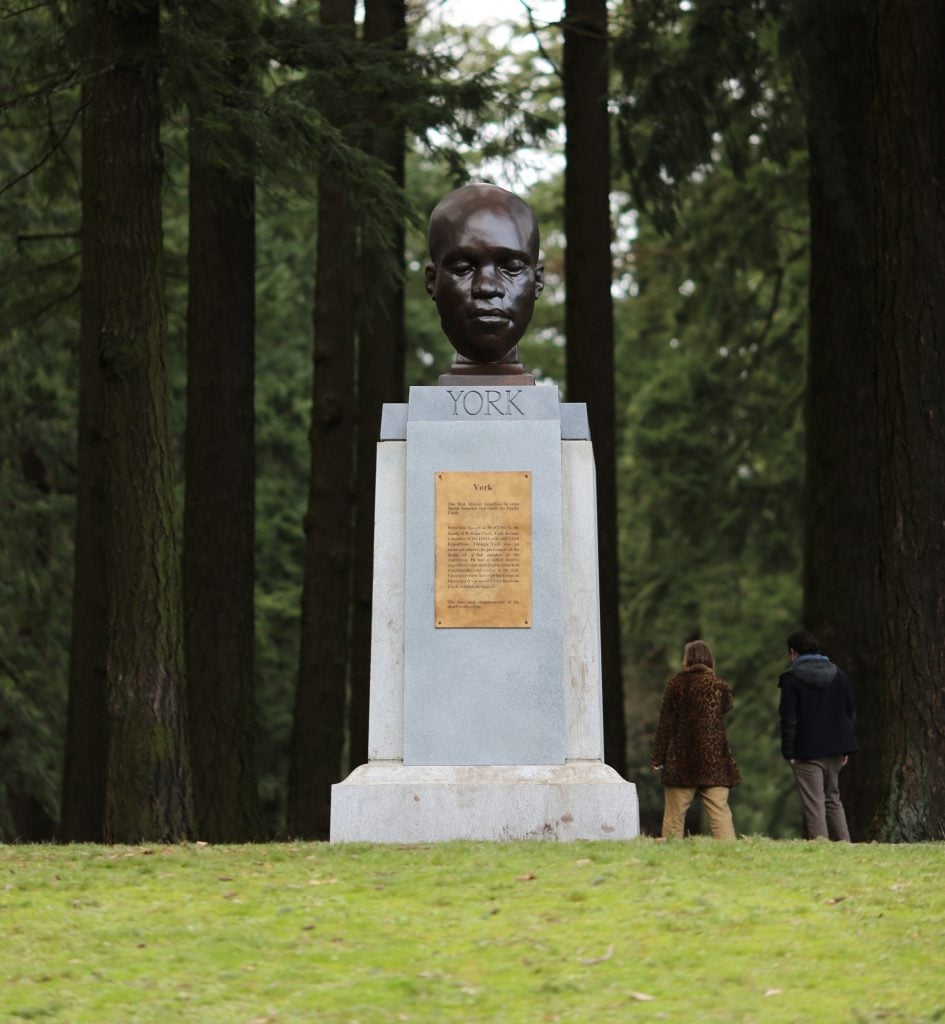Last October, after a summer marked by a steady stream of protests in Portland, Oregon, supporting the Black Lives Matter movement, someone toppled a statue in Mount Tabor Park of Harvey Scott, a prominent 19th-century conservative and newspaper editor who opposed giving women the right to vote.
Over the weekend, a new artwork appeared on the empty granite pedestal, leaving the Portland Parks and Recreation department mystified as to its origins. The work of a local artist, it is a bust of York, an enslaved Black man who was part of the Lewis and Clark expedition.
“I want to stay anonymous to keep the conversation about the subject,” the artist, a white man, told Artnet News. “[The statue] pays homage to York at a time when we all need to remember the important role that African Americans have played in our history and reflect on the tragedy of slavery—a tragedy that continues to echo.”
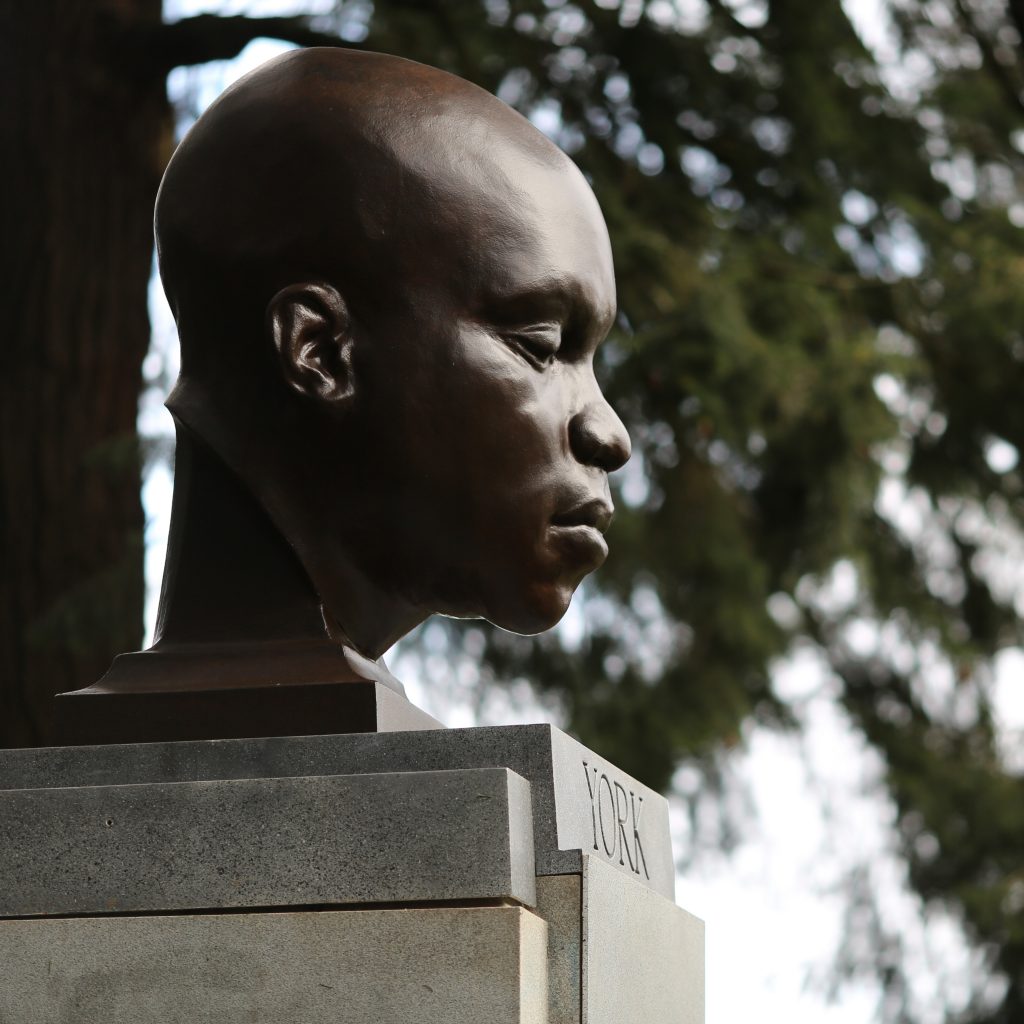
Anonymous, York (2010/2021). Photo courtesy of the artist.
“This piece of art was a complete surprise to Portland Parks and Recreation,” parks department director Adena Long told Artnet News in an email. “The bust is really impressive, and it has brought this important story to light for many Portlanders and people across the country. To me, that seems like what public art is all about, education, and inspiration.”
Originally owned by William Clark’s father, York was a childhood playmate of the great explorer, who later inherited York as part of his father’s estate. York was the only Black member of the Corps of Discovery, and was, according to Clark’s own journals, a valued member of the team.
Later in life, Clark is said to have freed York, but only after York spent years struggling to readjust to life in slavery after the freedoms he experienced in the West.
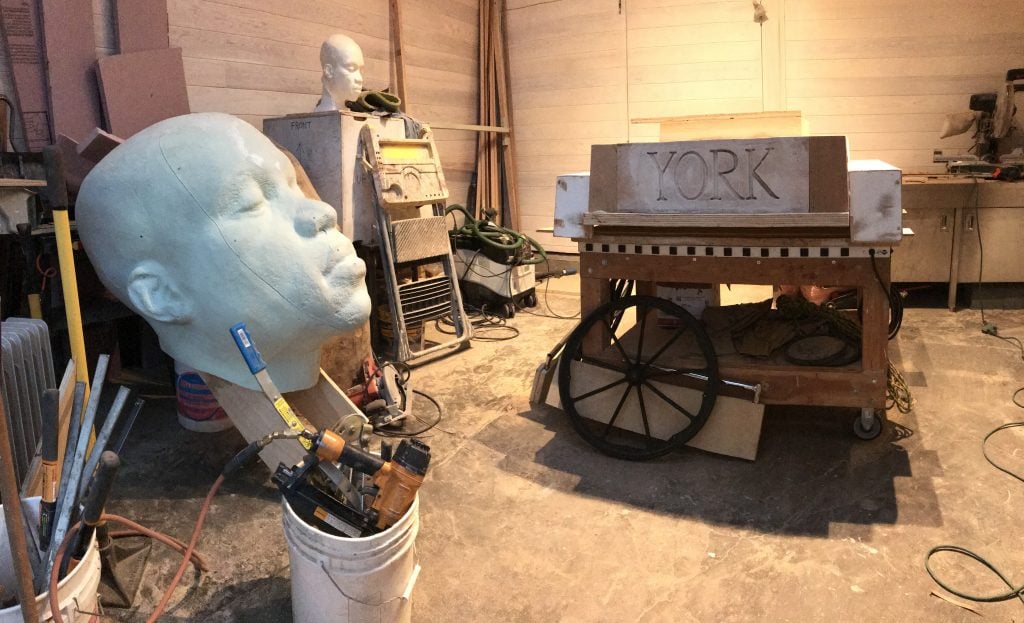
An in progress shot of York (2010/2021). Photo courtesy of the artist.
The artist first created a version of the sculpture in 2010 after learning about York’s unique role in Darrell Millner’s book York of the Corps of Discovery.
But since there are no known depictions of York made during his lifetime, the artist turned to the research of Charles Neal, an alum of Portland’s Lewis and Clark Law School whose lobbying led the institution to erect a monument by Alison Saar honoring the oft-overlooked expedition member in 2010.
“Charles tried to piece together a family history for York. Because of the name of York’s sister, he thought his family place of origin in Africa before abduction would have been Ghana,” the artist said. “I used a friend who traced his own family genetic history to that part of Africa as my model.”
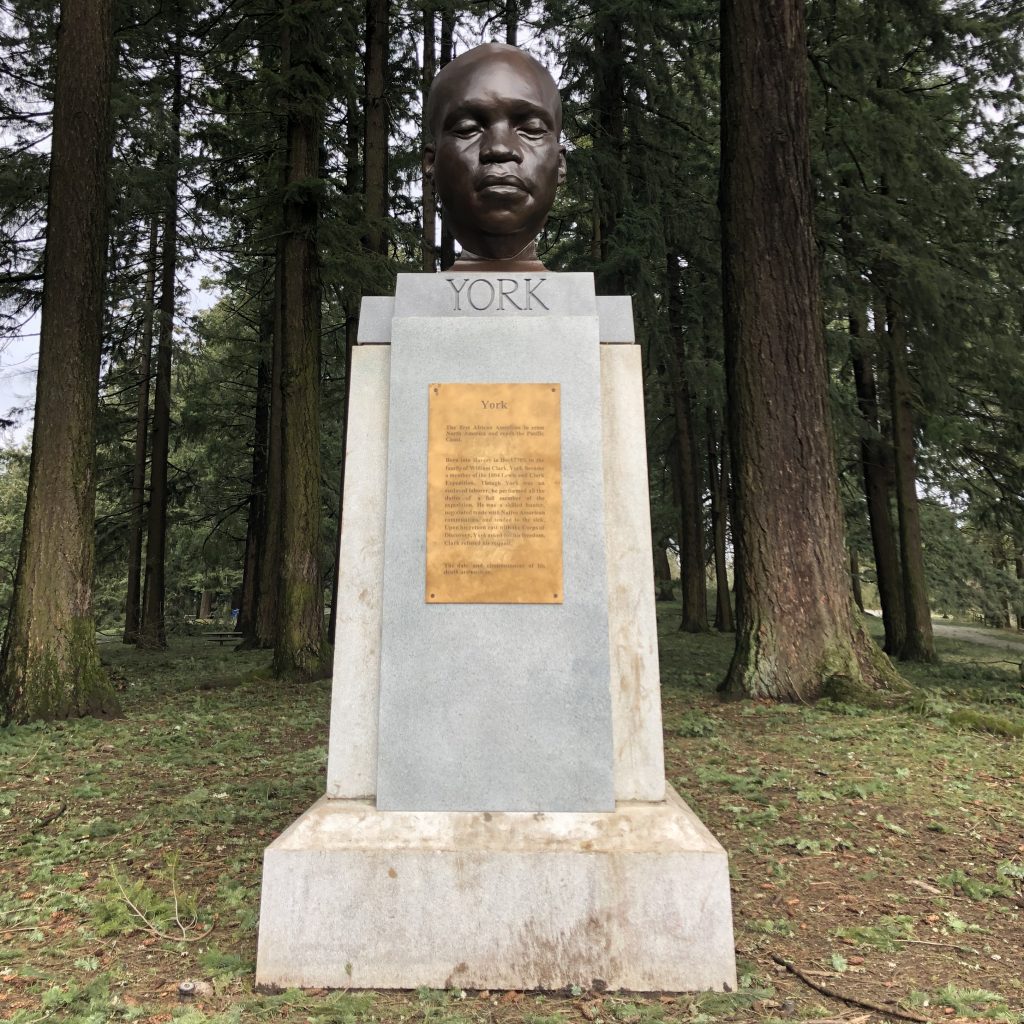
Anonymous, York (2010/2021). Photo courtesy of the artist.
The original bust of York was done at 1.5 times life scale, and has never been exhibited. But after the sculpture of Scott was toppled, the artist had an epiphany about his work’s purpose.
For his illicit installation, the artist made a new five-foot tall version of the bust and designed a plaque memorializing York as “the first African-American to cross North America and reach the Pacific Coast.” He also built a base that fits onto the existing granite pedestal, allowing him to install the work without any drilling. Working with a small team in the middle of the night, he put the work in place in roughly an hour.
“I’m very familiar with Mount Tabor Park, and seeing that empty pedestal often, it just came to me, literally in the middle of the night, that York belonged there, looking out over Portland,” he said.
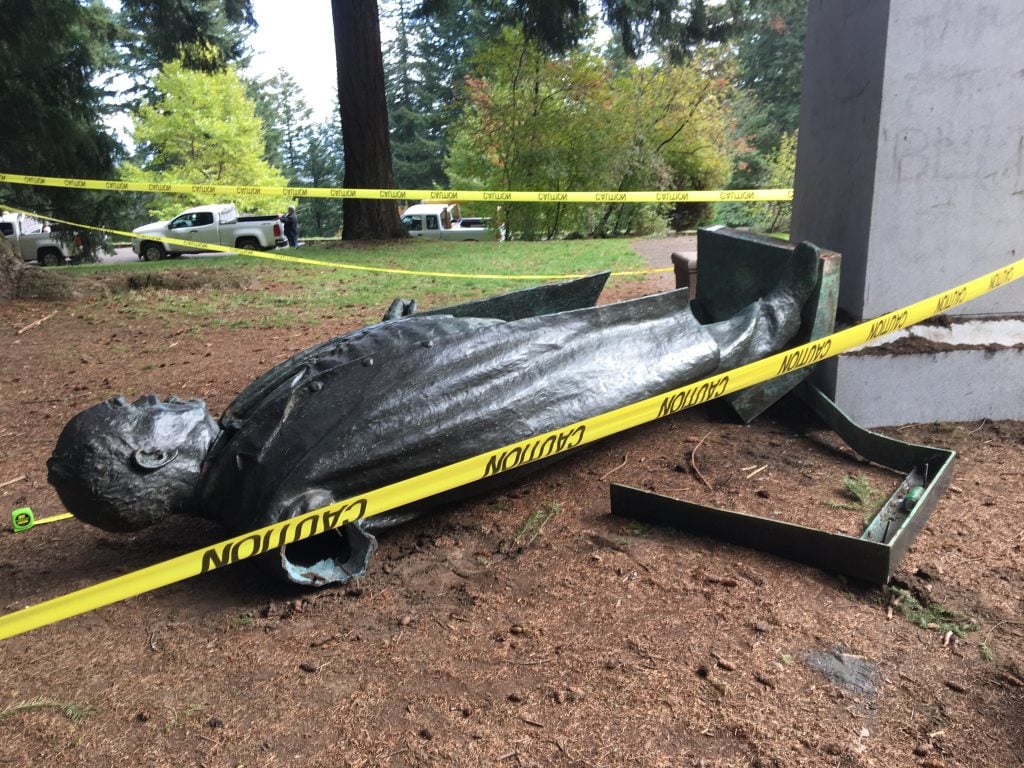
Gutzon Borglum’s toppled statue of Harvey Scott in Mount Tabor Park in Portland. Photo courtesy of the Portland Regional Arts & Culture Council.
The toppled Scott memorial, by Gutzon Borglum, is one of several public monuments that were vandalized in Portland last year as part of a larger movement demanding the reconsideration of artworks memorializing figures with problematic biographies.
Portland’s Regional Arts and Culture Council, which owns the work, is looking into the cost of repairing the statue and “will work together with our city and community partners to determine next steps regarding the restoration or replacement,” a spokesperson told Artnet News in an email.
For now, the monument to York remains, and has been embraced by many in the city—which is not a foregone conclusion. In Bristol, England, artist Marc Quinn installed an unauthorized statue of local activist Jen Reid atop the pedestal she had climbed after toppling a statue of slave trader Edward Colston. The artist was criticized for displaying the work without consulting the local community, and it was removed by authorities the next day.
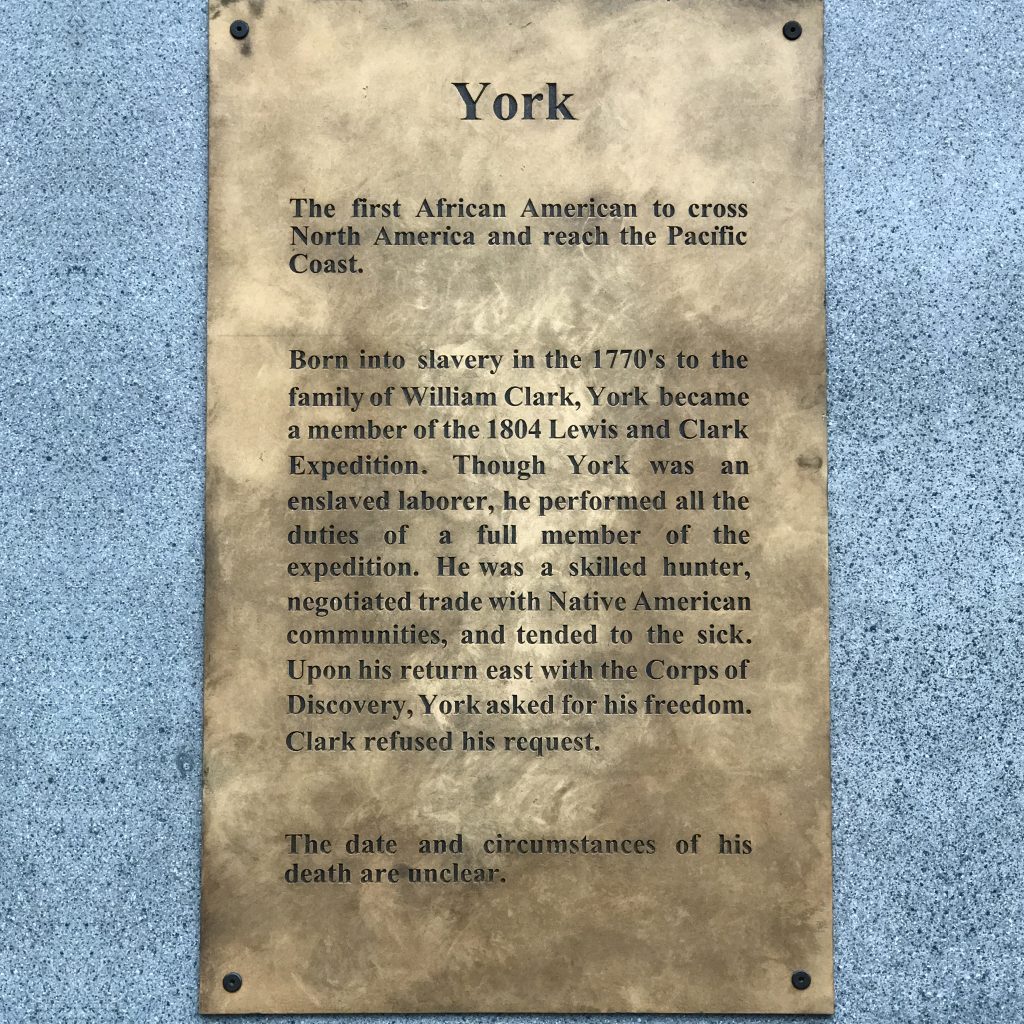
Anonymous, York plaque (2021). Photo courtesy of the artist.
But York has had a different reception, thanks in part to an official Parks Department policy allowing members of the public to install memorials as long as they pose no safety threats.
“We should regard this installation for both the important piece that it is, as well as a much-needed reminder to city leaders to hasten our work of rooting out white supremacy in our institutions,” city commissioner Carmen Rubio told Artnet News in an email. (She previously announced on Facebook that officials “are committed to keeping it in place for the foreseeable future.”)
Nevertheless, the artist is in no rush to come forward. “I’m going to let the community sit with the sculpture for a while as I try to figure out the life of the sculpture in the future,” he said.
“What I’m hearing is people talking about York,” he added. “I didn’t know what to expect, so I am very pleased that the city and the parks service understand the value of the statue’s presence in Portland.”
